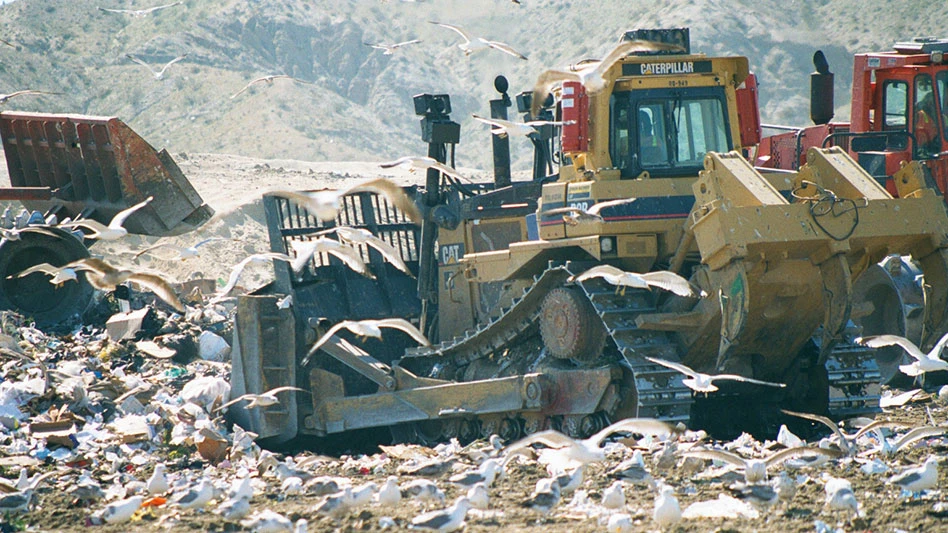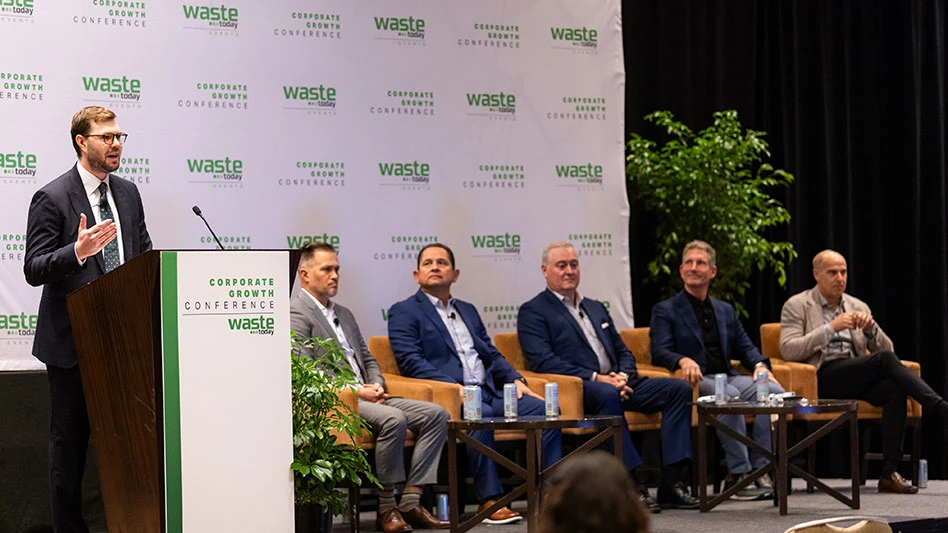
Photo by Neal Bolton
In the previous edition of Landfill Insights, we discussed how to evaluate your machine fleet in terms of the "Youth Factor." We noted that there is a sweet spot where your machines are in their prime in terms of high productivity and low cost. At this point in your machine’s life, it is old enough to have amortized the owning cost down to a reasonable rate, but still young enough to be dependable and productive.
But the bummer is: machines eventually—too quickly it seems—move into geriatric oblivion, where costs go up and productivity goes down. They’ve climbed too many slopes and are finally over the hill. Reliability falters and the auction block looms.
From this perspective, that’s the deal. Your machine has a limited range of “prime” that is followed by an inevitable period of old and costly. But what if we could do something to extend that prime period? Is there a mechanical fountain of youth that could preserve your machines in a state of operational nirvana? Sadly no, that’s storybook stuff. But there are some practical steps that can accomplish much the same thing. But it requires you to think outside the box.
Let’s look deeper into the basic factors that move a fleet into old age. It’s quite simple really: Machines don’t age in terms of years, as much as they do in hours. A machine that is 7 years old but only has 2,200 hours is still considered a young ‘un, compared to the same make and model that is 3 years old and has over 10,000 hours. It’s not quite the same as dog years, but in this context, a machine with 10,000 hours has passed its peak and is very much past its prime.
Let me bring things back into focus. It’s the age of your machines as measured not in years, but in hours, that drive equipment costs, period. Now back to the concept of sensitivity analysis. Your machine’s owning cost will drop like a ski hill: rapidly at first, then gradually flattening out over time as it accumulates hours. It’s the red line in this chart.
From a cost standpoint, that's a good thing and it occurs naturally, over time. Like Newton’s law of gravity, this is probably following some kind of financial law. We can’t stop that from happening … and we wouldn’t want to.
But it’s those operating costs on the other end of the chart we want to avoid. That steepening blue line indicates the machine is aging and costs are going up. That isn’t, however, as inevitable as you might think.
From a practical standpoint we have two trump cards, and we can play them both simultaneously to help flatten that blue line and push it further into the future. They are preventive maintenance and operational efficiency.
Preventative maintenance
Common sense would tell us—and experience confirms—that a good preventive maintenance (PM) program will help machines last longer. This concept is easy to grasp and is widely practiced within the waste industry. Sure, there are a few cowboys out there who run machines until they drop, without any thought of grease, oil or filters. But most managers follow good PM practices.
In this example, good PM practices could help extend a machine’s prime beyond the 10,000-hour mark. Please note that we’re using 10,000 hours as an example. The functional life can vary widely from one machine type to another.
The second factor for slowing machine aging is also very simple, but far less common. It is the practice of reducing machine operating hours by being more efficient. For those who are in the know, we’re talking about the concept of Lean, where we increase value-added activities and eliminate those that are non-value-added.
Operational efficiency
Your machines have a job. At a landfill those machines push, pack and cover. At transfer stations and MRFs they push, sort, process, bale and load. Yes, every machine and every truck in your fleet is dedicated to a specific use or task. Problem is, those practices become so ingrained that nobody challenges them. Nobody asks questions. Heck, we don’t even think about them. That’s just the way we’ve always done it.
Let's consider the dozer that is assigned to push trash from where it’s dumped to the active face. Typically, the dozer operator—and thus the dozer—are assigned to push … all day. So regardless of the variability in the inbound tonnage, the dozer is working. Some of that work is full-on production. It’s pedal-to-the-metal hard work with one big production push after another, working to keep up with the incoming waste flow.
But during the slack times, in between those rushes, operations are less productive. The dozer cleans up the edges, pushes a random box or bag of trash and backblades the tipping area. Dozers love to backblade.
As a result, when the dozer isn’t working productively to handle the peak waste flow, it is busy … keeping busy. And those “keeping busy” hours are pushing that machine pre-maturely toward old age.
This is a much deeper pool of analysis than we can address here, but as a point of reference, we’ve seen landfills successfully reduce dozer hours by 50 percent, by simply focusing only on high-production work and ignoring busy-work.
Try running those numbers across your budget. What would it do for your bottom line if your machines stayed younger … longer? In this scenario, were slowing the aging process and keeping the machine under 10,000 hours for a longer period of time by simply not wearing it out with unnecessary busy-work.
When it comes to sensitivity analysis of machine costs, hours of use and overall life are the biggies. The indirect relationship between these two factors is obvious. If you can reduce the hours of use, you automatically increase overall machine life.
This concept applies to every type of truck or machine—in every application.
Have you heard the story about the two loggers competing to see who could fell the most trees in a day? Logger A worked like mad all day long. By quitting time, he was whupped, but he had felled 20 trees. Logger B, on the other hand, stopped work early but he had felled an incredible 40 trees. What’s more, he was feeling good. Tired but good.
Logger A was confused. He asked, “How could you accomplish twice as much work? I watched you stop and rest every hour or so, while I never stopped working all day long. What’s the deal?”
Logger B responded, “I wasn’t resting, I was sharpening my saw.”
If you use your equipment wisely, focusing on efficiency and productivity rather than pounding out the hours, you’ll get more work done with less effort. More importantly, your machines will last longer, spending more time in their prime.
We’ll explore this concept in a future article. In the meantime, sharpen your saw.
Latest from Waste Today
- Hawaiian county selects landfill site
- CAA submits final draft program plan in Oregon
- Washington city adds organics collection to waste service
- Aspen Waste Systems expands into Denver-metro market
- NYSAR3 seeks respondents to commercial recycling survey
- Aemitis AD system goes online
- Liebherr breaks ground on logistics center
- Rubicon appoints new CFO





